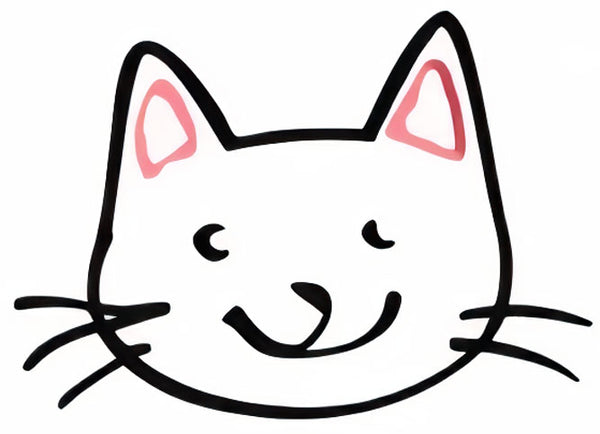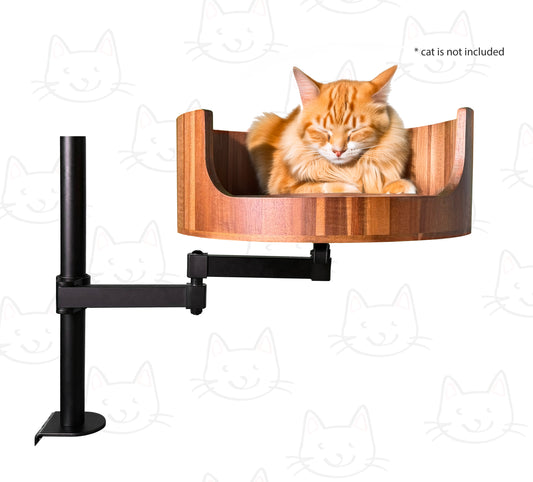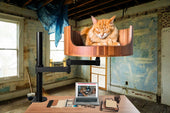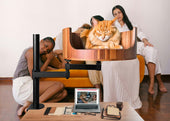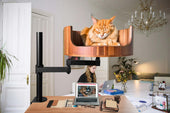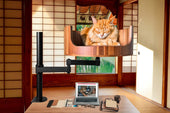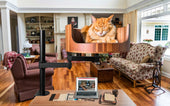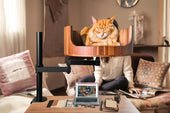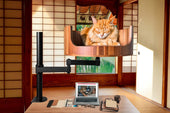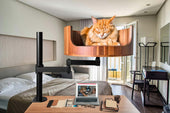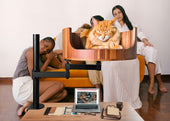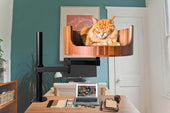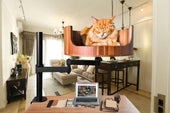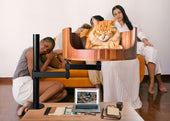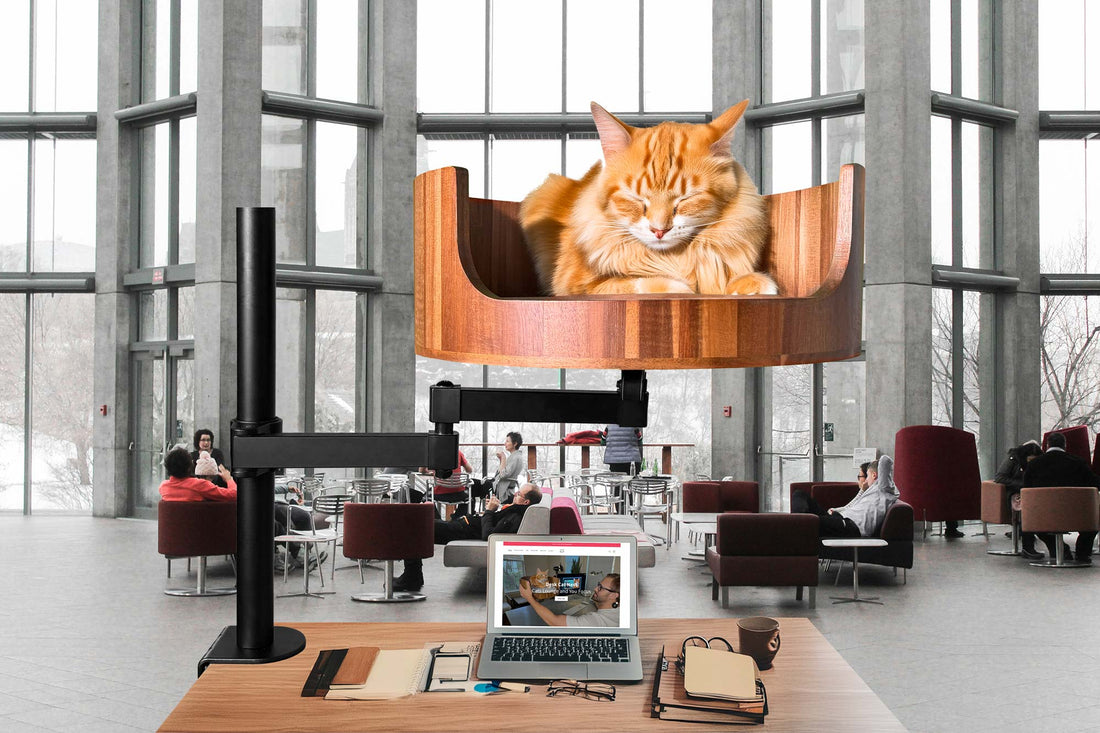
How old is 8 cat years in human years? Find out now!
Share
Have you ever wondered how old your furry feline friend is in human years? As cat owners, we often find ourselves pondering this question as we watch our kitties grow and age before our eyes. With the belief that one cat year is equal to seven human years, we can estimate their age relative to our own. But is this age calculation truly accurate? In this article, we will delve into the concept of cat years versus human years and explore the factors that contribute to a cat's aging process.
One popular theory is that the formula of one cat year equaling seven human years is an oversimplification. Research has shown that cats age at a faster rate in their early years, with the first two years of a cat's life equivalent to 24 human years. After this period, the aging process begins to slow down, leading to roughly four cat years equaling one human year. Additionally, factors such as breed, size, and overall health can also influence a cat's aging process. By better understanding the relationship between cat years and human years, we can gain insight into our feline companions' health and well-being, helping us provide them with the best care possible.
1. Cats age differently than humans, making it inaccurate to simply multiply their age by 7 to determine their human equivalent age.
2. The first two years of a cat's life roughly equate to 25 human years in terms of growth and development.
3. After the first two years, each additional cat year corresponds to around 4 human years.
4. Understanding a cat's age in human years can help owners provide appropriate care and anticipate age-related health issues.
5. By using a cat age calculator or chart, owners can more accurately gauge their feline companion's age in human terms.
Understanding Cat Years vs. Human Years
Cat years and human years are different because cats age at a faster rate than humans. The common belief is that one cat year is equivalent to seven human years. However, this is not entirely accurate because cats mature more quickly in their first two years of life. It is generally accepted that the first year of a cat's life is equivalent to about 15 human years, while the second year is around 10 human years. After that, each cat year is typically considered to be worth around 4 human years.
Calculating Cat Age in Human Years
To determine how old a cat is in human years, you can use the general rule of thumb mentioned above. For example, if a cat is 8 years old in cat years, you can calculate their age in human years by adding up the equivalent human years for each stage of their life. This would be:
- First year: 15 human years
- Second year: 10 human years
- Remaining 6 years: 6 years x 4 human years = 24 human years
Total human years = 15 + 10 + 24 = 49 human years
Therefore, an 8-year-old cat would be approximately 49 human years old.
Factors Affecting Cat Age Equivalents
It is essential to note that the cat age equivalents mentioned above are general guidelines and may vary depending on individual factors. Genetics, breed, lifestyle, diet, and overall health can all influence how quickly a cat ages compared to humans. For instance, smaller breeds tend to have longer lifespans and age more slowly than larger breeds. Additionally, a well-cared-for cat that receives proper nutrition and veterinary care is likely to age more gracefully than a cat that is neglected or exposed to health risks.
Recognizing the Signs of Aging in Cats
As cats age, they may exhibit signs that indicate their advancing years. These can include changes in behavior, such as decreased activity levels, sleeping more often, or becoming less social. Physical signs of aging may also manifest, like graying hair around the face or body, reduced muscle tone, and slower movements. It is crucial for cat owners to be aware of these signs and to adapt their care routines to accommodate their aging feline companions. Regular veterinary check-ups can help identify any age-related health issues and ensure optimal quality of life for senior cats.
## Desk Cat Nest FAQ
### How old is 8 cat years in human years?
It is commonly believed that one cat year is equivalent to about seven human years. So, if a cat is 8 years old in cat years, it would be approximately 56 years old in human years. However, this is just a rough estimate and the aging process can vary depending on the breed and size of the cat.
### Can a Desk Cat Nest help my cat live longer?
A Desk Cat Nest can provide a comfortable and safe space for your cat to rest and relax, which can contribute to their overall well-being. While it may not directly impact the lifespan of your cat, providing them with a cozy and stress-free environment can help improve their quality of life.
### Is a Desk Cat Nest suitable for all cat breeds and sizes?
Desk Cat Nests come in a variety of sizes to accommodate different breeds and sizes of cats. It is important to choose the appropriate size for your cat to ensure they have enough room to move around comfortably. It is always recommended to check the dimensions and weight capacity of the Desk Cat Nest before making a purchase.
### How often should I clean my Desk Cat Nest?
It is recommended to clean your Desk Cat Nest regularly to maintain a clean and hygienic environment for your cat. Depending on the level of usage, you may need to clean the nest at least once a week. Wash the bedding, wipe down any surfaces, and remove any debris to keep the nest clean and fresh for your cat.
In conclusion, knowing how old is 8 cat years in human years is crucial for understanding our feline companions' aging process. Providing them with a comfortable and cozy resting place like the Desk Cat Bed can help them relax and rejuvenate, especially as they age and their energy levels change. With its soft materials and ergonomic design, the Desk Cat Bed offers the perfect spot for cats to rest and recharge, promoting their overall well-being and comfort. Investing in a Desk Cat Bed is a valuable choice for cat owners looking to keep their beloved pets happy and healthy throughout their lives.
